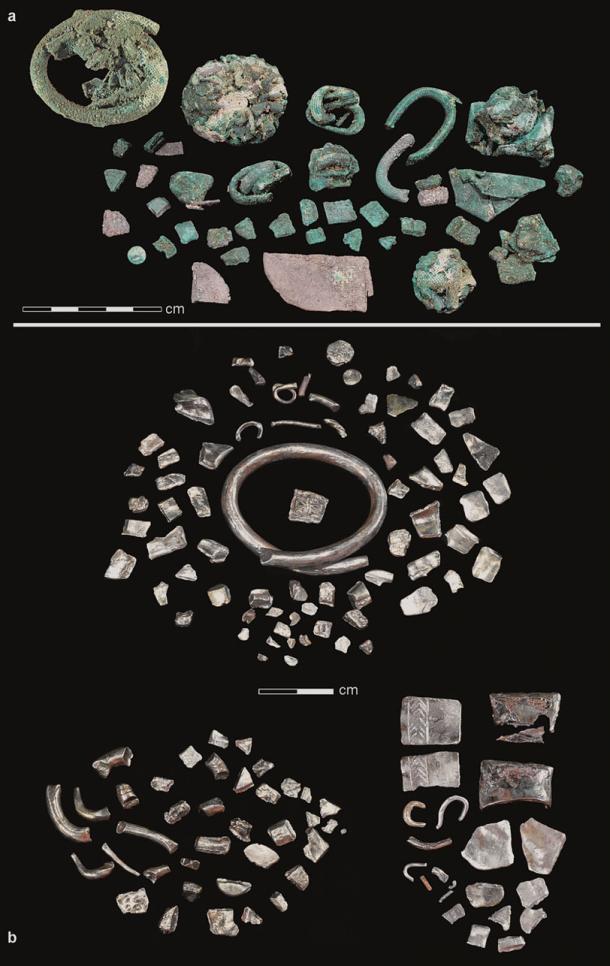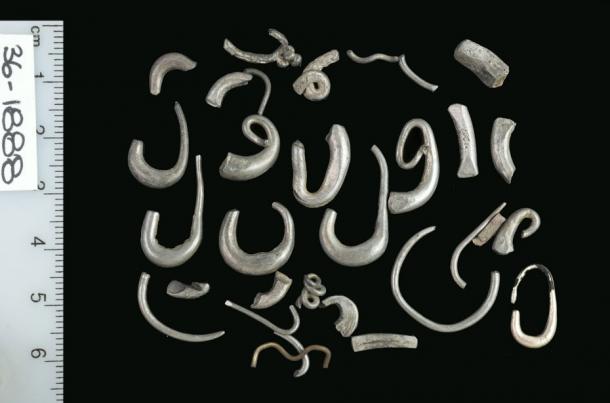Iron Age silver forgeries have been identified by a team of Israeli researchers. This might illustrate the economic hardships of the Tribes of Israel and their decision to make fake silver.
Coronavirus finally hit the casual use of cash on the head, or at least the banks did. But maybe this is for the good as paper and metallic money holds thousands of microbes from every environment it touches. A 2017 study published in the journal PLOS ONE swabbed $1 bills from New York City and found “hundreds of species of microorganisms” that cause acne, and they also identified “vaginal and anal bacteria.” Reaffirming the title “dirty cash,” 80% of ten dollar bills tested across America had traces of cocaine .

Dirty cash – A study showed 80% of ten dollar bills tested across America had traces of cocaine. ( Public Domain )
Another, much older, type of “dirty cash” is being looked at by researchers from the University of Haifa and the Hebrew University of Jerusalem . Soon the results of a new study will be published in the upcoming issue of the Journal of Archaeological Science discussing evidence of “counterfeiting” in the ancient world.

Silver pieces from Tel Megiddo. When there was a shortage, the Tribes of Israel made ‘fake silver.’ Source: Clara Amit/ Israel Antiquities Authority
A Shortage Caused the Widespread Creation of Fake Silver
A severe shortage of silver was identified in the Levant during the first Iron Age, between 1200-950 BC. At this time the tribes of Israel settled in Canaan and began to melt silver with a high percentage of copper. An article in Jerusalem Post says small percentages of silver were mixed with other substances such as arsenic, which perhaps made the pieces look like solid silver, however, this fake silver was a “deliberate forgery,” according to the researchers.
The study has examined new archaeological data gathered from sites in Beit She’an, Megiddo, and Ashkelon, and represents the doctoral dissertation of Tzilla Eshel, under the supervision of Prof. Ayelet Gilboa from the University of Haifa, as well as Prof. Yigal Erel and Dr. Naama Yahalom-Mack from Hebrew University. The student’s conclusion suggests the lack of silver supplies led to a shortage and that this might even have been a principal reason the tribes of Israel migrated from the Haran area to Canaan.

One of the Canaanite silver hoards found at Beth She’an in northern Israel was dated to the 12th century BC. It contains fake silver – ingots with a surface of silver around a copper-rich core. (Beth She’an expedition )
But a Blip in the Good Name of the Tribes of Israel
It is known that silver earrings cast in Canaan from 1900 BC were made from almost 100% silver, so too were silver artifacts discovered in later periods. But the chemical composition of these Iron Age caches shows them to be a silver alloy with as much as 80% copper in some instances. This, married with the traces of arsenic, which would have given ingots a silver color, suggests someone had made a deliberate attempt to create a metal that could be traded as pure silver – forgery!
Based on this provocative evidence, the researchers estimate that during the period between 1200-950 BC the people in Canaan desperately needed silver for trade, but not having sources of the pure material they may have procured small amounts for use in these “counterfeit pieces.” The study also determined Spain as the place of origin of the silver that was later made into Levant fake silver and the copper in the alloy came from mines in the Timna area of modern day Yemen.

Some ‘fake silver.’ Note the greenish tinge attesting to a high proportion of copper in the alloy. (Yael Yelovitz/ Israel Antiquities Authority )
Turning to the Bible for Answers
In the new doctoral thesis, Eshel refers to Chapter 22 the Biblical book of Ezekiel , in which it is prophesied that the prophet will be angry with God over the children of Israel. The passage says: ‘Son of man, the people of Israel have become dross to me; all of them are the copper, tin, iron and lead left inside a furnace.’
Eshel is quick to add that the sentence “is of course a metaphor for the relationship between God and the children of Israel ,” but she adds “in practice, it is quite possible that it describes a reality that was familiar at the time: A silver ingot was mixed with various metals such as tin, iron and ore.”

Silver bits serving in pre-currency commerce . ( Clara Amit/ Israel Antiquities Authority )
A paper published on CORE says that between 406 and 404 BC the Athenian state officially issued silverplated copper or bronze coins in place of pure silver coins. The issuing of debased, or plated coins, of gold or silver is described as a “major retrograde step for any government,” and furthermore, “ever since the invention of coinage in Asia Minor towards the end of the 7th century B.C., forged coins have been made by individuals in the anticipation of a quick profit.”
Top Image: A traditional craftsman creates silver money. Credit: Андрей Журавлев / Adobe Stock
By Ashley Cowie
 RSS Feed
RSS Feed















 December 13th, 2020
December 13th, 2020  Awake Goy
Awake Goy  Posted in
Posted in  Tags:
Tags: 













